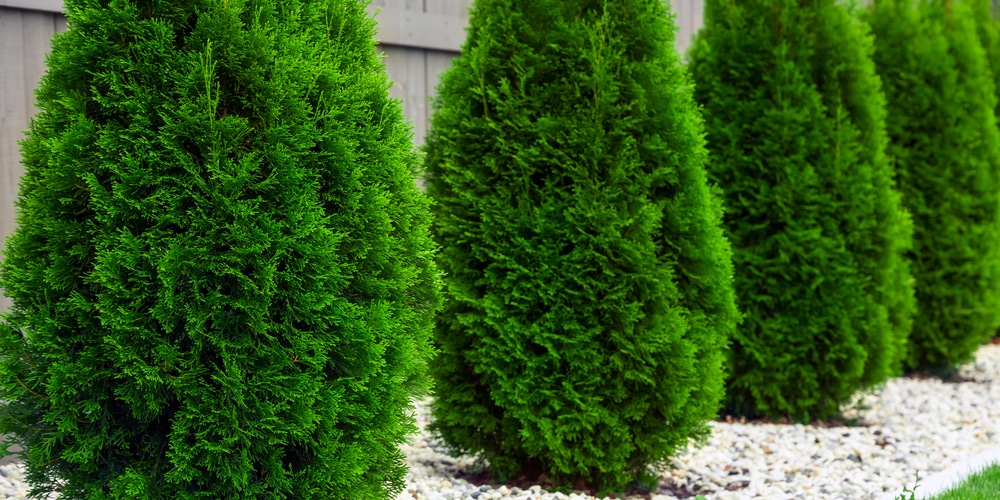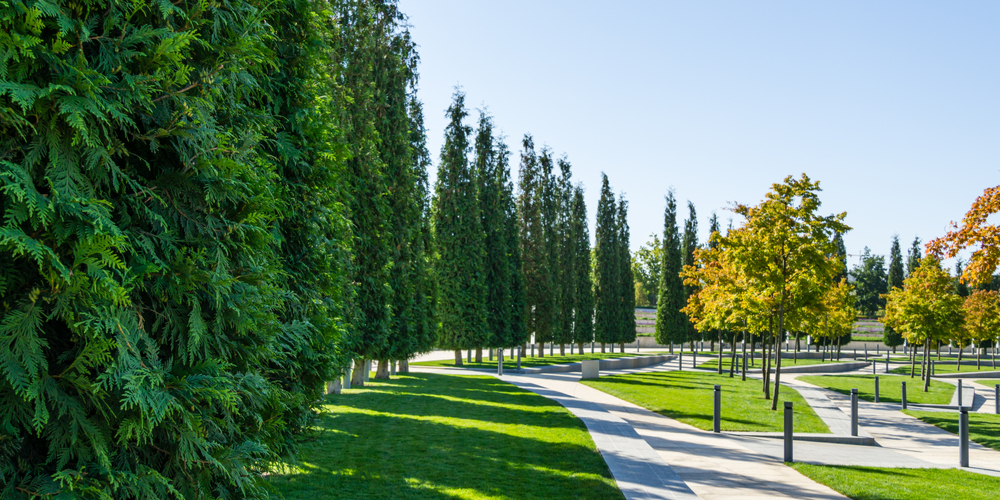Arborvitae (Thuja spp.) make for one of the most popular and versatile evergreens for home landscapes. Many homeowners use them as foundation plantings, natural hedges, privacy screens, and specimen plants. Adventurous gardeners go the extra mile to shape them into unique topiaries.
That said, gardeners looking to create fence and edge lines using Arborvitae may want to know how long it takes Arborvitae to grow. Well, Arborvitae shrubs come in a number of varieties, with varying growth rates. Generally, Arborvitae trees are fairly slow-growing, with most varieties growing at the rate of approximately 6-12 inches per year.

Depending on the variety, soil, and light conditions, as well as other specifics critical to plant growth, Arborvitae trees may take 15 to 20 or more years to reach their mature height. Read on to find more about these evergreen trees.
How to Make Your Arborvitae Grow Faster
There are only five species of Arborvitae: two hail from the US, and the other three are native to Asia. They are all generally hardy and feature tiny, scale-like leaves packed closely together in overlapping rows on branchlets displayed in a flattened, fan-like spray. Many people love them because of their evergreen foliage that grows into a naturally upright, canonical shape.
For homeowners looking to add texture to their landscape with these Arborvitae, knowing how you could help your trees grow faster can help ensure you get results faster. Generally, Arborvitae trees are not the fastest-growing shrubs. However, these tips can go a long way to helping you achieve results father with healthy and string shrubs.
1. Plant your Arborvitae at the right time of the year
Arborvitae plants are hardy enough to be planted at any time of the year, but there are optimal weather conditions. Planting your shrubs at the optimal time can help them to grow healthy, strong, and faster. After all, no one wants to frustrate them by over waiting.
That said, the best time to plant Arborvitae is in the early spring. Planting in early spring gives the plants plenty of time to establish their roots and new growth before winter.
Although many varieties are drought-tolerant, it is not a good idea to plant them in summer, whether transplanting or sowing directly into your yard.
If you miss planting in early spring, you can plant in the fall.
2. Plant in a site that receives adequate sunlight
Arborvitae trees are adaptable and will grow in varied weather conditions. Even so, they grow best when planted in areas receiving at least 6 hours of direct, unfiltered sunlight a day. They can survive and thrive in partial shade, but the limited amount of sunlight can significantly stunt their growth.
For gardeners in southern climates, it is worth noting that Arborvitae plants don’t like the scorching heat of the afternoon rays. For this reason, you will want to protect your evergreens against the afternoon sun – they need adequate sunlight, not excess.
3. Space as needed
Before planting any type of Arborvitae, it is imperative to do some research on the variety you want to plant. This will help ensure that you plant your Arborvitae trees when the conditions are optimal and also space them appropriately.
Spacing needs vary from one type to another, and it is extremely important to allow each tree enough room. Dwarf types of Arborvitae will grow between 2 and 4 feet wide, while giant varieties can quickly grow to 15 to 25 feet wide. Planting larger trees close together will force them to compete for nutrients that can stunt their growth.
Understanding the type you are planting will help ensure that you leave reasonable space between individual trees.
4. Water your plants properly and as needed
Arborvitae trees are cherished by many for their dense green foliage. To ensure that they ornament your backyard as anticipated, make sure to water them enough in their first season of being planted. This will ensure they establish themselves to withstand any conditions and flourish over the years.
How Long Does It Take Arborvitae To Grow: Conclusion
Arborvitae trees come in many types and are generally not fat-growers. In ideal conditions, most types have an average growth rate of 6 to 12 inches per year, meaning it might take up to 20 or more years for Arborvitae to reach maturity.
